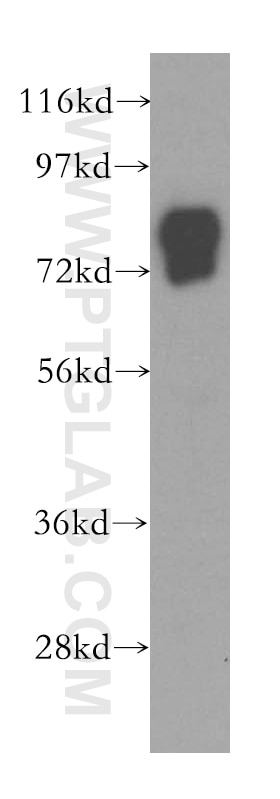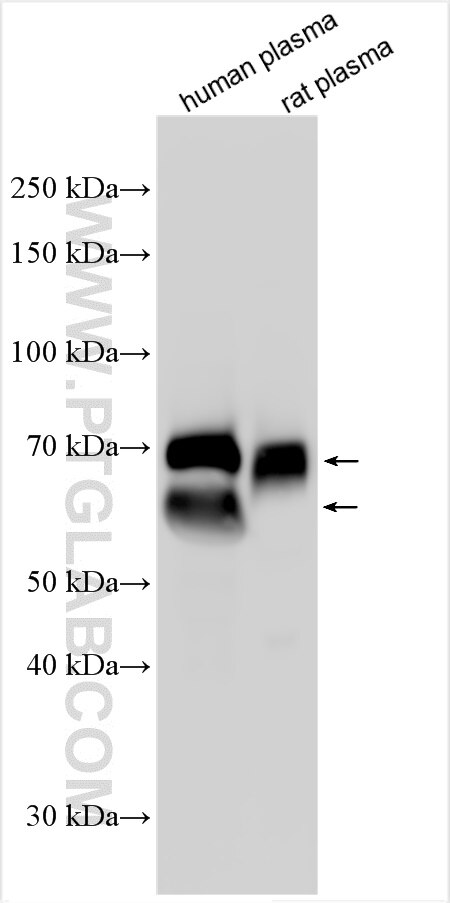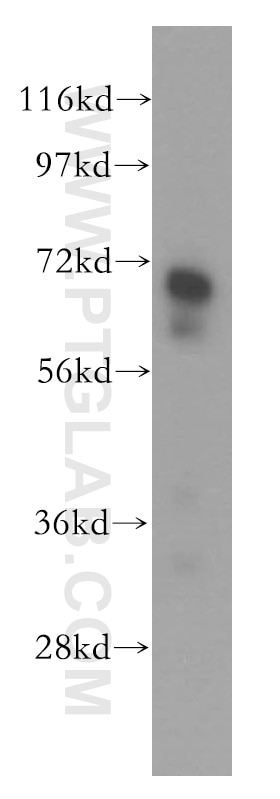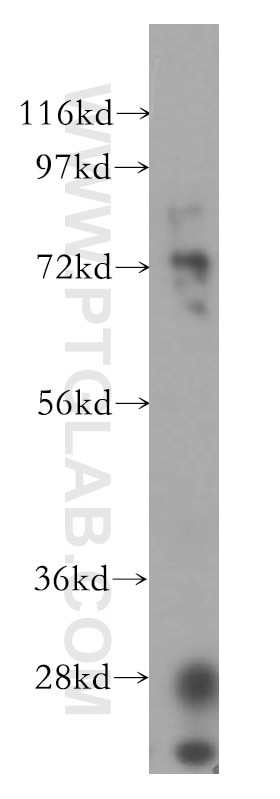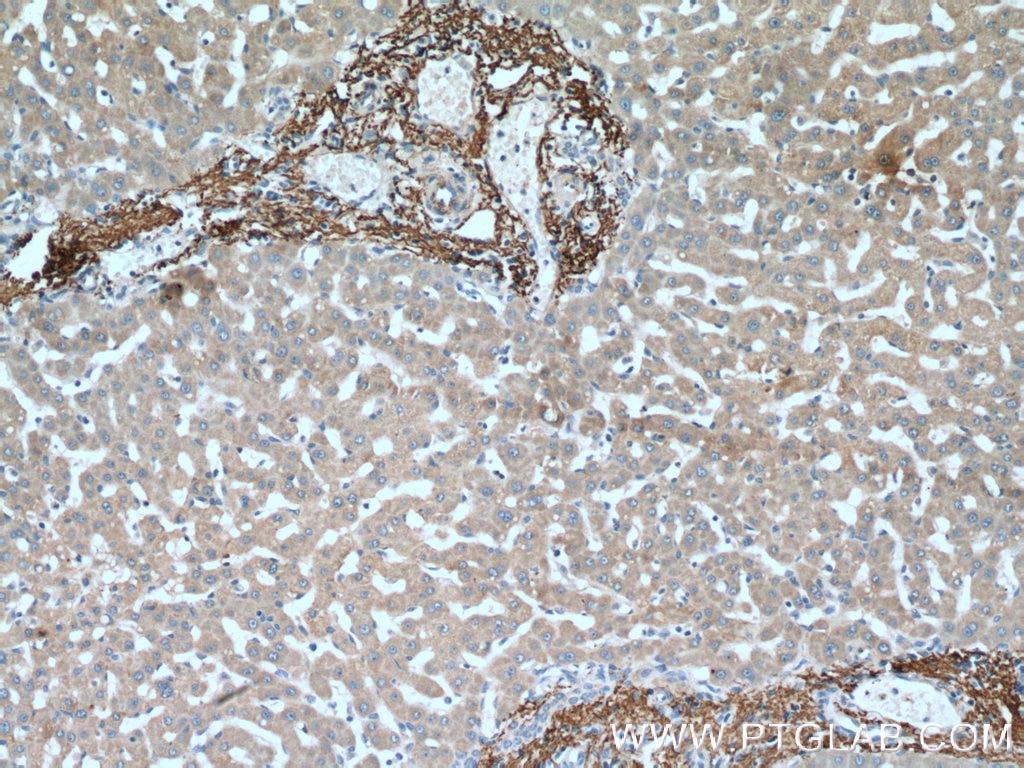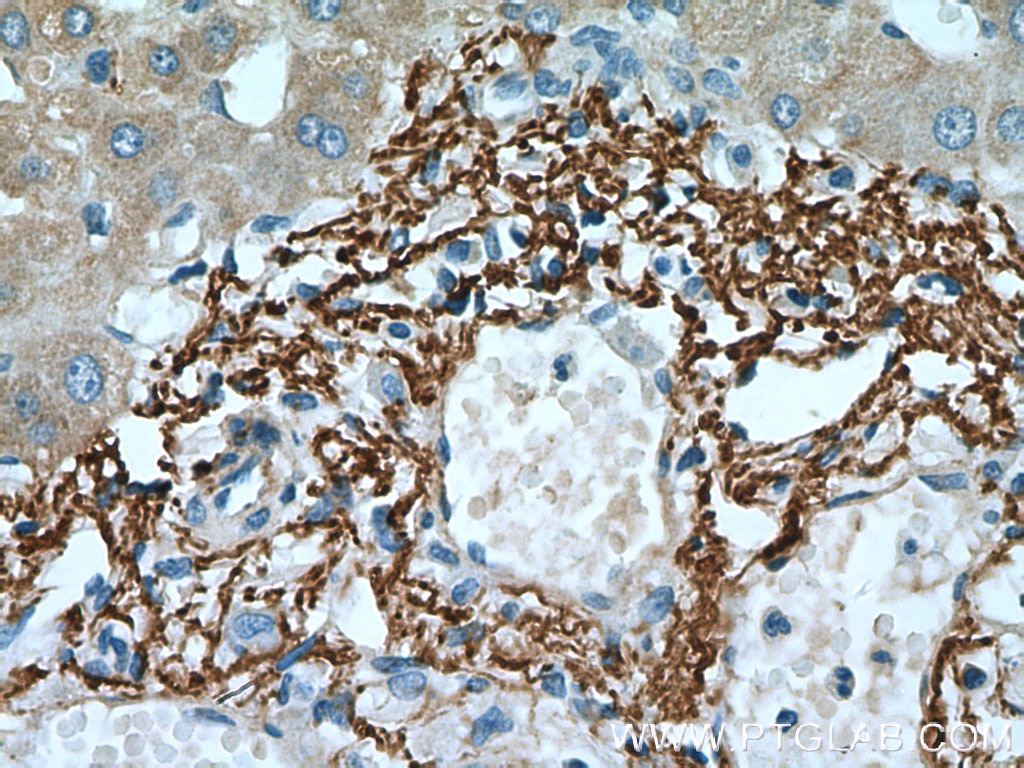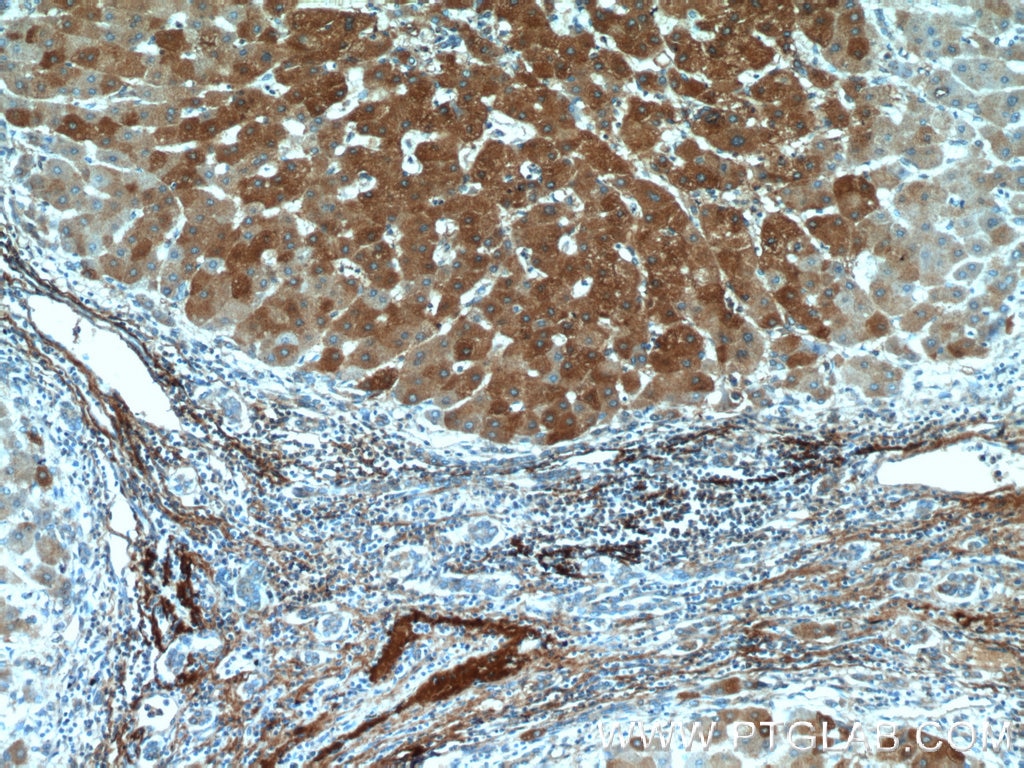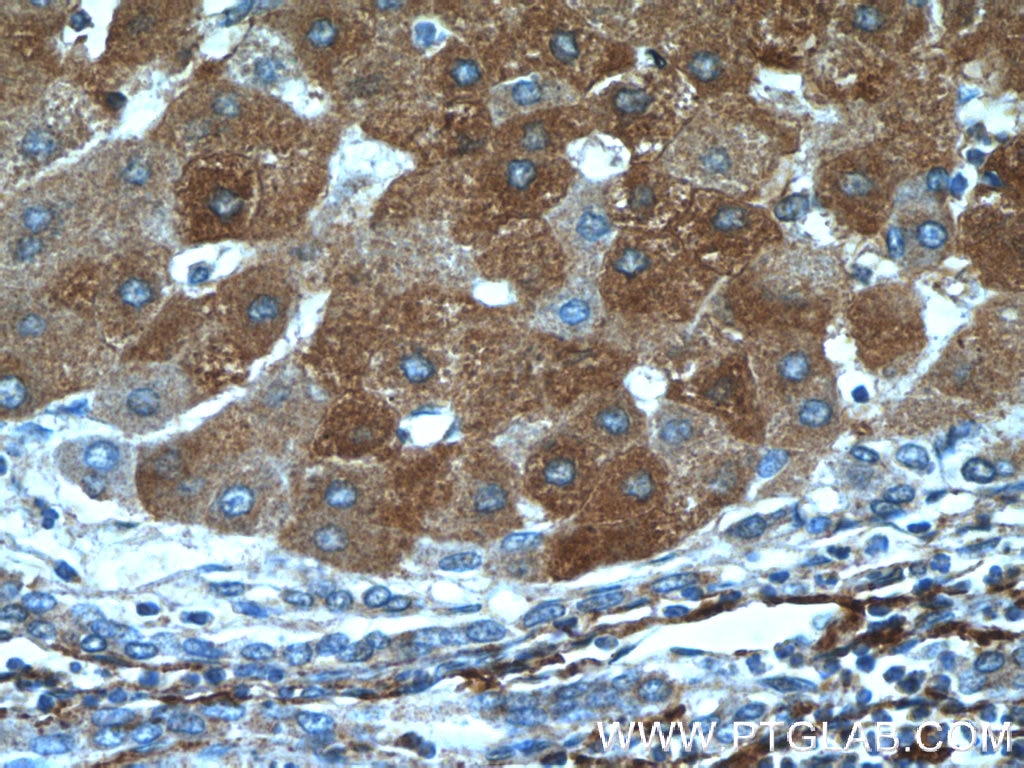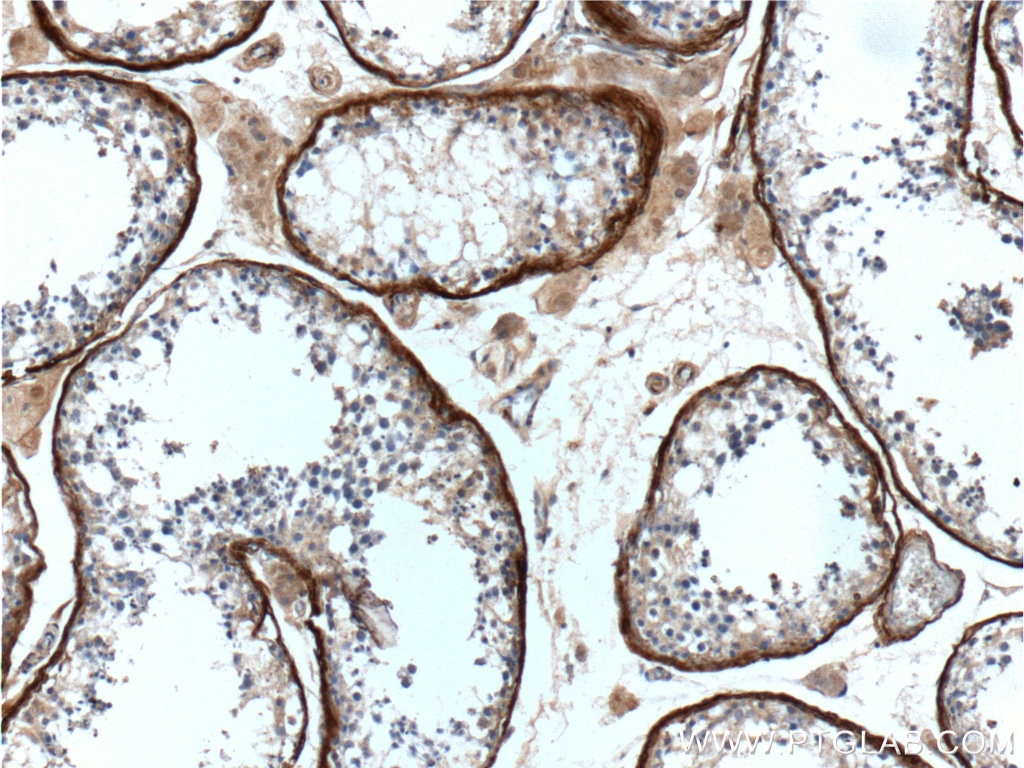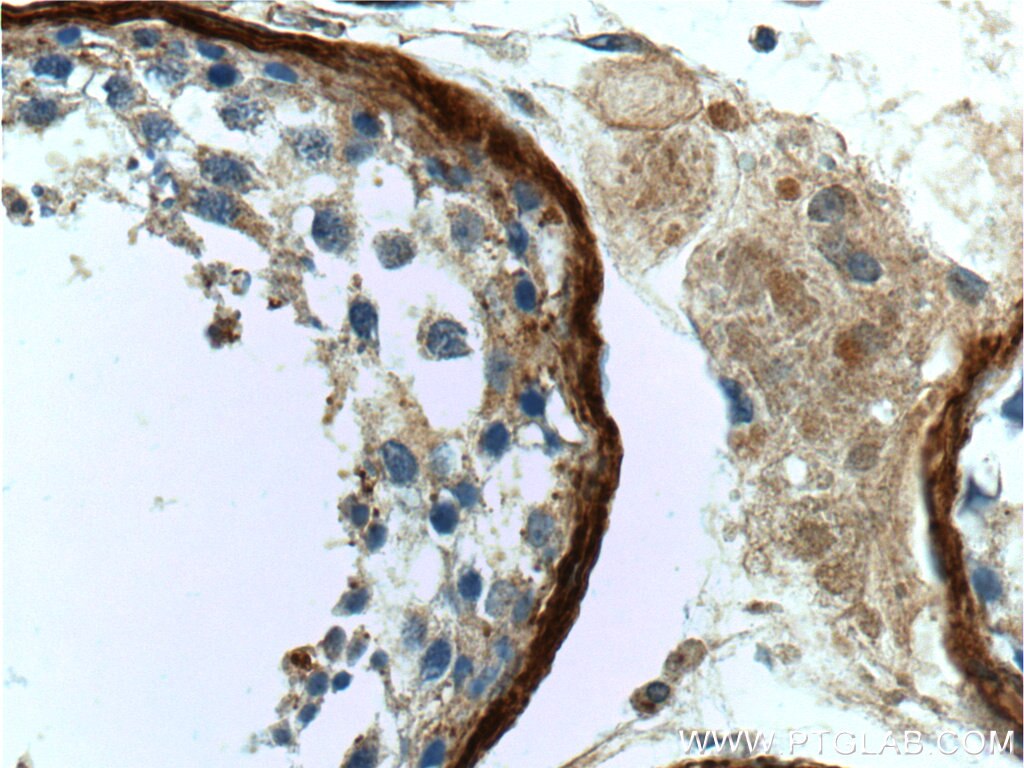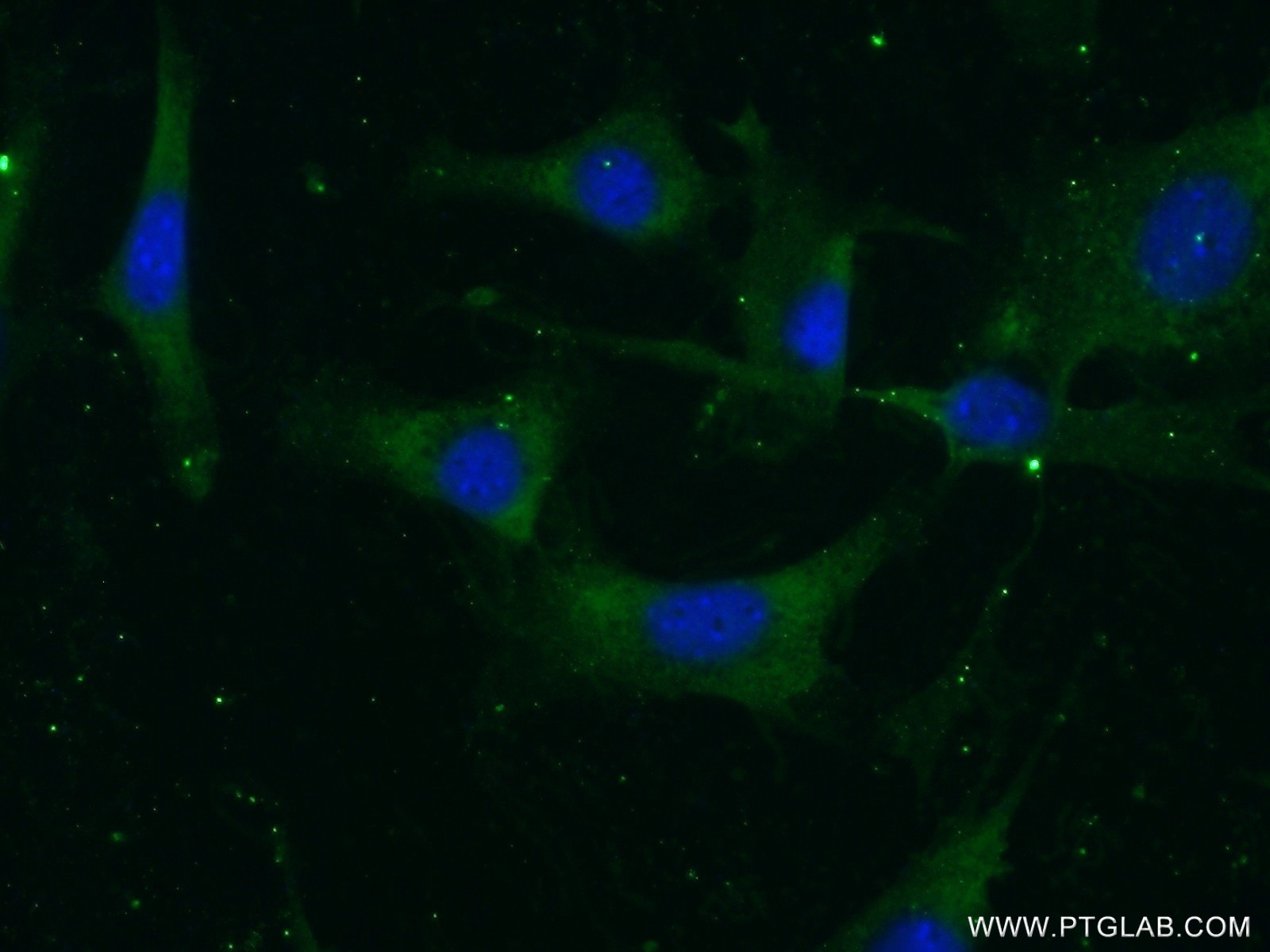Anticorps Polyclonal de lapin anti-Vitronectin/S-protein
Vitronectin/S-protein Polyclonal Antibody for WB, IHC, IF/ICC, ELISA
Hôte / Isotype
Lapin / IgG
Réactivité testée
Humain, rat, souris et plus (2)
Applications
WB, IHC, IF/ICC, ELISA
Conjugaison
Non conjugué
N° de cat : 15833-1-AP
Synonymes
Galerie de données de validation
Applications testées
| Résultats positifs en WB | rat plasma, cellules NIH/3T3, plasma humain, tissu testiculaire humain |
| Résultats positifs en IHC | tissu hépatique humain, tissu de cirrhose hépatique humain, tissu testiculaire humain il est suggéré de démasquer l'antigène avec un tampon de TE buffer pH 9.0; (*) À défaut, 'le démasquage de l'antigène peut être 'effectué avec un tampon citrate pH 6,0. |
| Résultats positifs en IF/ICC | cellules NIH/3T3 |
Dilution recommandée
| Application | Dilution |
|---|---|
| Western Blot (WB) | WB : 1:5000-1:50000 |
| Immunohistochimie (IHC) | IHC : 1:50-1:500 |
| Immunofluorescence (IF)/ICC | IF/ICC : 1:50-1:500 |
| It is recommended that this reagent should be titrated in each testing system to obtain optimal results. | |
| Sample-dependent, check data in validation data gallery | |
Applications publiées
| WB | See 15 publications below |
| IHC | See 4 publications below |
| IF | See 7 publications below |
Informations sur le produit
15833-1-AP cible Vitronectin/S-protein dans les applications de WB, IHC, IF/ICC, ELISA et montre une réactivité avec des échantillons Humain, rat, souris
| Réactivité | Humain, rat, souris |
| Réactivité citée | rat, Humain, porc, souris, Plasmodium falciparum |
| Hôte / Isotype | Lapin / IgG |
| Clonalité | Polyclonal |
| Type | Anticorps |
| Immunogène | Vitronectin/S-protein Protéine recombinante Ag8443 |
| Nom complet | vitronectin |
| Masse moléculaire calculée | 478 aa, 54 kDa |
| Poids moléculaire observé | 70-75 kDa, 65 kDa, |
| Numéro d’acquisition GenBank | BC005046 |
| Symbole du gène | VTN |
| Identification du gène (NCBI) | 7448 |
| Conjugaison | Non conjugué |
| Forme | Liquide |
| Méthode de purification | Purification par affinité contre l'antigène |
| Tampon de stockage | PBS with 0.02% sodium azide and 50% glycerol |
| Conditions de stockage | Stocker à -20°C. Stable pendant un an après l'expédition. L'aliquotage n'est pas nécessaire pour le stockage à -20oC Les 20ul contiennent 0,1% de BSA. |
Informations générales
Vitronectin is a 75-kDa glycoprotein present in blood and in the extracellular matrix (PMID: 10399314). Vitronectin is a multifunctional glycoprotein that mediates cell-to-substrate adhesion, inhibits the cytolytic action of the terminal complement cascade in vitro and binds to several serine protease inhibitors of the serpin family (PMID: 1372588).
Protocole
| Product Specific Protocols | |
|---|---|
| WB protocol for Vitronectin/S-protein antibody 15833-1-AP | Download protocol |
| IHC protocol for Vitronectin/S-protein antibody 15833-1-AP | Download protocol |
| IF protocol for Vitronectin/S-protein antibody 15833-1-AP | Download protocol |
| Standard Protocols | |
|---|---|
| Click here to view our Standard Protocols |
Publications
| Species | Application | Title |
|---|---|---|
Cell Stem Cell Region-specific cellular and molecular basis of liver regeneration after acute pericentral injury | ||
Brain Pathol Reconstituting neurovascular unit with primary neural stem cells and brain microvascular endothelial cells in three-dimensional matrix. | ||
Sci Rep Molecular Camouflage of Plasmodium falciparum Merozoites by Binding of Host Vitronectin to P47 Fragment of SERA5. | ||
J Cell Mol Med Induction of migration of periodontal ligament cells by selective regulation of integrin subunits. | ||
Langmuir Characterization of Initial Cell Adhesion on Charged Polymer Substrates in Serum-Containing and Serum-Free Media. | ||
Proteomics SILAC-based Quantitative Proteomic Analysis of Secretome between Activated and Reverted Hepatic Stellate Cells. |
Avis
The reviews below have been submitted by verified Proteintech customers who received an incentive for providing their feedback.
FH Jingwen (Verified Customer) (01-28-2020) | It worked well when I performed the western blot in cancer samples.
|
